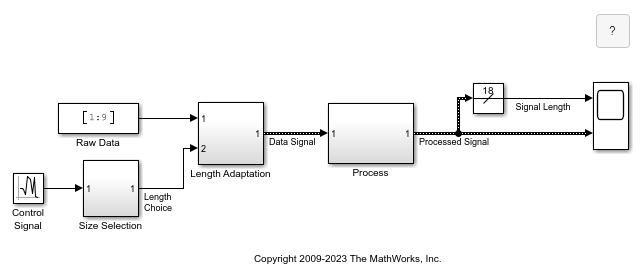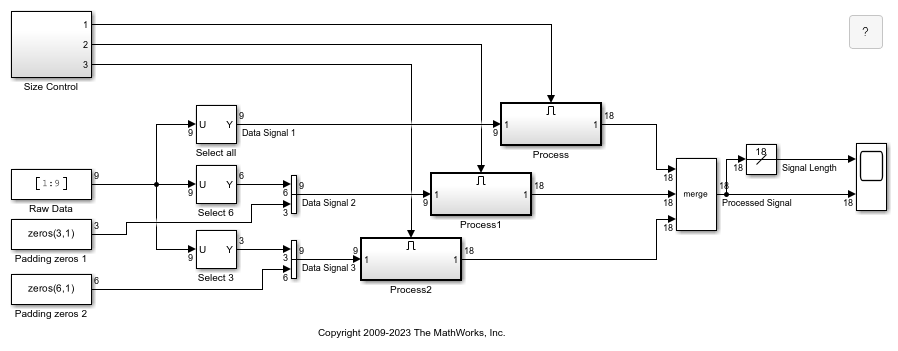可变大小信号长度自适应
此示例展示了一个假设的系统,其中信号的长度通过适应控制信号的变化而随时间变化。
打开并编译名为 sldemo_varsize_dataLengthAdapt 的模型。

该模型对应于一个假设的系统,其中信号的长度随时间而调整。在任何给定的时间点,尺寸选择子系统根据控制信号值的范围将信号长度设置为三、六或九个元素。
该模型由两部分组成:
左侧部分生成信号并将信号转换为可变大小。
右侧部分处理可变大小的信号并将信号输出到示波器。
长度适应基于控制信号的值。当控制信号落入三个预定范围之一时,数据信号的大小会相应改变。
然后将该可变大小的信号馈送到处理模块中,其中支持可变大小信号的模块对该信号进行操作。请注意 MATLAB Function 模块的应用,其输入和输出信号都是可变大小的。将产生的信号和信号宽度输入到示波器中进行可视化。
对于固定大小的实现,打开并编译名为 sldemo_varsize_dataLengthAdtFS 的模型。

在该模型中,每种不同的信号大小都需要一个专门的处理模块,从而导致模块重复。